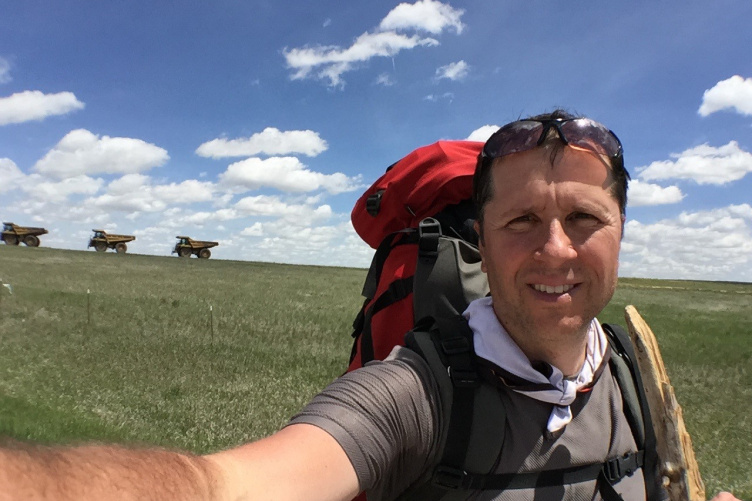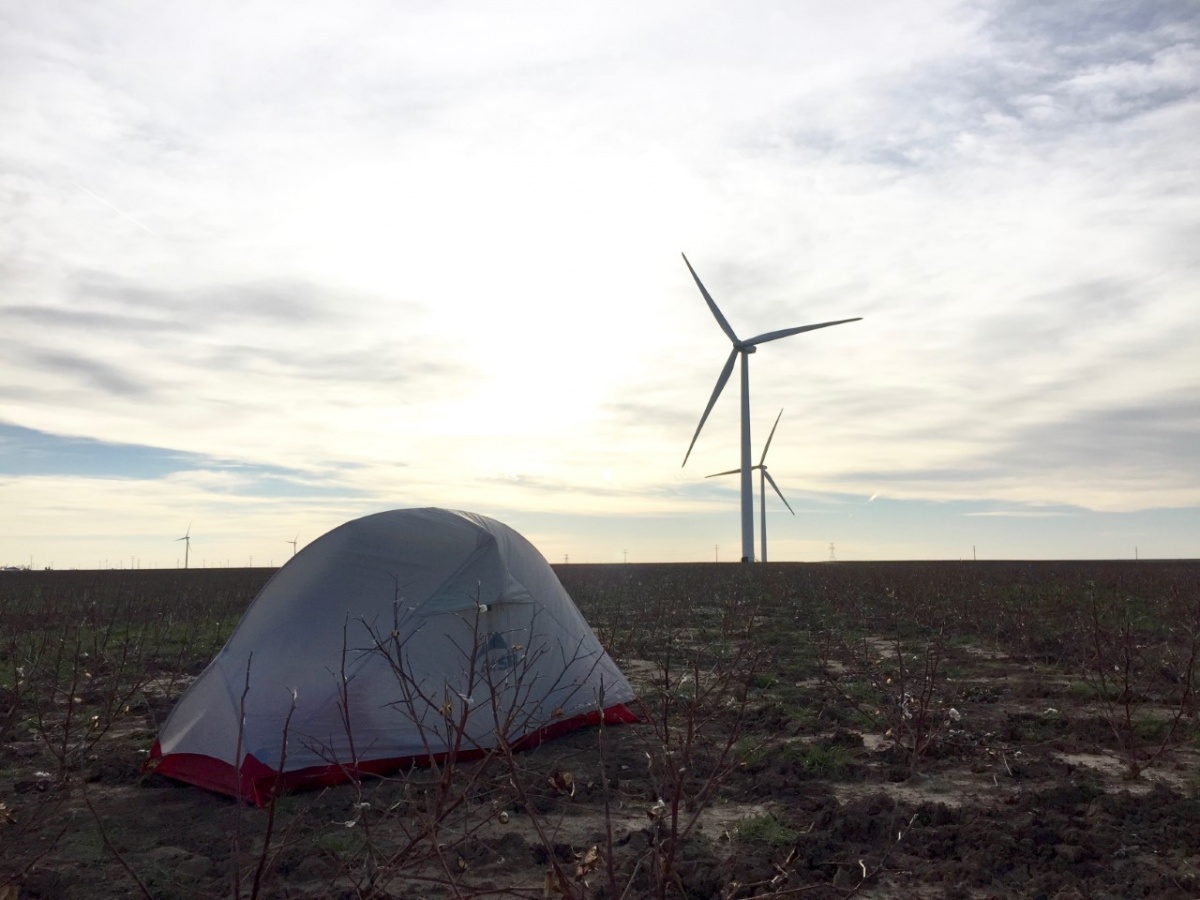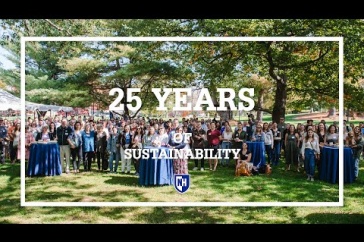
Assistant professor Tom Haines trekking through coal country in 2015. The dump trucks behind him are used to move earth in Wyoming's Powder River Basin, home to some of the largest open-pit coal mines in the world.
Tom Haines’ spring break was a bit out of the ordinary. During the course of 10 days in March, Haines trekked 50 miles across the Texas Panhandle and slept at local farms. He contacted a few farmers ahead of time but mostly traveled where the windy plains of the Panhandle blew him.
The Texas Panhandle, the northern most part of the state, is mostly flat, dry and subject to wind storms and extreme temperatures. So, why did Haines sleep on strangers’ couches, endure 50 mph winds and 100-degree heat? Research. For the past three years the assistant professor of English has been gathering information for his book “Walking to the Sun,” a narrative about six walks he is taking across fuel-laden landscapes in the U. S.
“The idea is to use the walks to learn about and report on our energy system. Specifically, what we do to fuel our industrial lives today — that is, mostly fossil fuels —and what we must do to fix the system for the future,” Haines said. “I’m curious to see just how much energy we consume and find the sources of where our fuel and energy come from.”
For example, because of its strong steady winds, Texas produces the most wind power of any U.S. state. Carson County, where Haines journeyed, is home to 635 turbines that convert the wind’s kinetic energy into mechanical power and, ultimately, electricity.

Not only has Haines endured the challenges of the Texas Panhandle but he also walked 70 miles of the Bakken Shale in North Dakota, which during the last 40 years has come to be considered the largest oil development in the U.S. He traveled to the Marcellus Shale gasfield in Pennsylvania, believed to be the largest volume of recoverable natural gas in the country. He also explored the Power River Basin in Wyoming, where 40 percent of the nation’s coal deposits reside, and a tidal power plant in Maine, which converts ocean waves into electricity. His final trip will be to the Mojave Desert’s Ivanpah solar facility, the world’s largest solar thermal power station.
“Texas is great example for other places; it proves that renewable energy can be done,” Haines said. “We just have to choose to politically invest in it.”
The first part of “Walking to the Sun,” talks about Haines’ explorations at the fossil fuel sites, and the latter part focuses on renewable energy, such as the wind farms. In September, he will turn in his final draft for publication.
“I began this project knowing I wanted to write about energy and reconnect to nature,” said Haines. “Most of us don’t even know how much energy we consume. I wanted to gain a better feeling as an individual about my use.
“One of the big questions of our time is whether we can reconfigure our industrial world to use renewable sources. The next 80 years are going to determine a lot about how we as a species can survive,” Haines continued. “We have to act now.”
-
Written By:
Cierra Dubinsky '17 | Communications and Public Affairs | cmy945@wildcats.unh.edu



















































